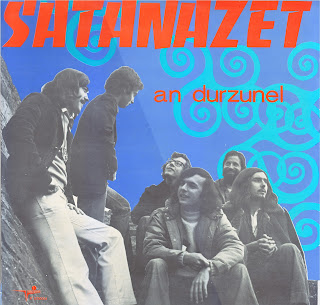She was born in London to Cornish-born parents but lived in Cornwall when she was six months old onwards. She started singing in school in chapel choirs and village halls; she was involved in the Cornish scene in the early sixties. Then she started singing in Cornish (kernewek) thanks to Richard Gendall who composed two songs for her to compete at the Killarney Pan Celtic Festival in 1973. That's how she became the singer who represented Cornwall everywhere in the world. She was regularly in demand at the Lorient Festival and became quite famous in France.
This album combines live recordings in France with studio work. The main instrument is the acoustic guitar played by David King. The repertoire is quite large with only one traditional ... a blues. All the other songs are compositions by R. Gendall mainly as long with John Lennon and Paul McCartney's ''here, there and everywhere'' and Mick Jaeger and Keith Richards' ''Honky tonk woman''. There are two songs in Cornish; Cornish is the Celtic language closest to Breton. The last native speaker of Kernewek died at the end of the eighteen century. A linguistic revival occured at the beginning of the twentieth century and in 2010 Unesco decided to remove Cornish from the list of extinct languages.
The title ''Lyonesse'' refers to King Arthur's kingdom at the Western tip of Cornwall where Land's End is (the cover picture was taken there). It is said that his kingdom is now in the sea but we can sometimes hear the bells of immersed churches ...
Text in French with lyrics in English and Cornish with French translation.





































